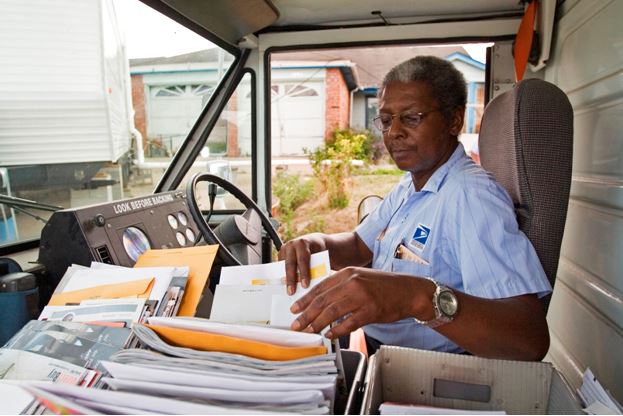In the fast-paced world of communication and delivery, Postal Service Mail Carriers play a crucial role in connecting people and businesses, akin to how platforms like Liteblue bridge the gap in digital communication for postal employees. These professionals are often the unsung heroes, ensuring that letters, parcels, and important documents reach their destinations safely and on time. This article delves into the common tasks and responsibilities of Postal Service Mail Carriers, providing a comprehensive understanding of what their day-to-day work entails.
- The Daily Start: Sorting and Preparing
- Route Planning and Vehicle Preparation
- The Delivery Process
- Handling Special Deliveries and Services
- Record Keeping and Reporting
- Ensuring Safety and Security
- Continuous Learning and Adaptation
- Challenges and Problem-Solving
- Community Interaction and Representation
- Physical and Mental Stamina
- End-of-Day Duties
- Conclusion
The Daily Start: Sorting and Preparing
A Mail Carrier’s day typically begins at the post office. The first task is to sort through the incoming mail and packages that have arrived overnight. This process involves organizing items according to the delivery route and ensuring that each piece of mail is correctly addressed and in good condition. Mail carriers must pay attention to detail during sorting to prevent misdeliveries and delays.
Route Planning and Vehicle Preparation
Once sorting is complete, Mail Carriers plan their delivery route. Route planning is essential for efficiency, especially in areas with heavy traffic or complex street layouts. They must also prepare their delivery vehicle, ensuring it is stocked with the necessary supplies, such as fuel, first-aid kits, and additional postage forms or labels. Safety checks are also a part of this process, as reliable transportation is critical to their job.
The Delivery Process
The core responsibility of a Mail Carrier is delivering mail and packages to residences and businesses along their route. This task requires them to navigate neighborhoods and commercial areas, often in varying weather conditions. They must be adept at driving and proficient in walking routes, all while adhering to strict time schedules.
During delivery, Mail Carriers often interact with the public. They may answer questions about postal services, handle requests for package pickups, or even assist residents with postal-related issues. This aspect of the job requires excellent communication skills and a friendly demeanor. Services like Liteblue Login are instrumental in streamlining these interactions for efficiency and effectiveness.
Handling Special Deliveries and Services
Mail Carriers are also responsible for special deliveries, which may include registered, certified, or express mail. These items often require signatures upon delivery, adding an extra layer of responsibility and interaction with recipients. Additionally, carriers may offer services such as collecting mail on hold for customers who are away from home or assisting with change-of-address processes.
Record Keeping and Reporting
Accurate record-keeping is a vital part of a Mail Carrier’s responsibilities. They must keep track of deliveries made, any undeliverable items, and customer interactions. This information is crucial for maintaining the integrity of the postal service and addressing any delivery issues that may arise.
Ensuring Safety and Security
The safety and security of the mail are paramount. Mail Carriers must be vigilant in protecting the items they deliver from theft, damage, and tampering. This responsibility extends to their safety as well, as they must be aware of their surroundings to avoid accidents or confrontations.
Continuous Learning and Adaptation
The postal service industry is continuously evolving, and Mail Carriers must stay updated with new postal regulations, delivery technologies, and best practices. This may involve regular training sessions and adapting to new methods or tools introduced by the postal service.
Challenges and Problem-Solving
Mail Carriers often face challenges such as inclement weather, difficult-to-navigate routes, or issues with mail delivery. Effective problem-solving skills are essential to address these challenges promptly and maintain the quality of service.
Community Interaction and Representation
Mail Carriers represent the postal service in the communities they serve. They often build relationships with residents and business owners along their routes, creating a sense of community and trust. This aspect of the job can be incredibly rewarding, as they become familiar figures and trusted service providers in the neighborhoods.
Physical and Mental Stamina
The role of a Mail Carrier is physically demanding. It involves significant walking, lifting, and carrying of mail items, sometimes in challenging weather conditions. Mental stamina is equally important, as they need to stay focused and alert throughout their shift.
End-of-Day Duties
At the end of the delivery route, Mail Carriers return to the post office to unload any undelivered mail, complete their reporting tasks, and prepare for the next day. This time is also used to debrief with supervisors, address any concerns, and receive feedback. Utilizing tools such as Postalease helps them manage their administrative tasks efficiently.
Conclusion
Postal Service Mail Carriers play a pivotal role in the functioning of our daily lives. Their responsibilities go beyond just delivering mail; they are custodians of an essential public service, problem solvers, community members, and representatives of the postal system. Understanding these multifaceted roles highlights the importance and dedication of Mail Carriers in keeping our society connected and informed.



